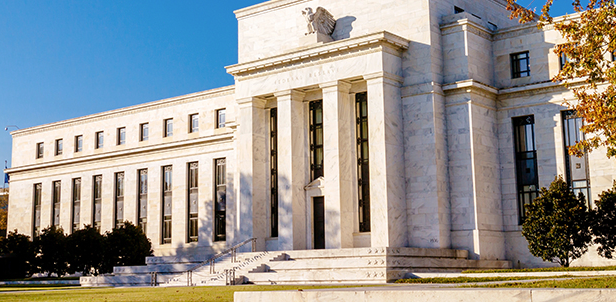Birth of the Fed Put A put, is an option that increases in value when the underlying security’s price falls below a certain level. One of its most common usages is to protect a portfolio against a market decline.
The famous “Fed put” refers to the notion that the Federal Reserve will take action to support the equity market in times of increased risk and volatility. Since Alan Greenspan became chairman of the Fed during the 1980s, there has been a definitive pattern of the central bank increasing liquidity during times of crisis. This includes taking action to inject liquidity during major downturns in an effort to “fix” the stock market. Each successive time that the Fed does this, investors have become further reliant on this free put option. Eventually, the Fed put became priced in, pushing equity valuations higher and encouraging investors to take excessive risk. This has led to many criticisms of the Fed put for creating “moral hazard.”
Originally, the Fed put was known as the “Greenspan put.” When Mr. Greenspan finally retired in 2006 after leading the Fed for almost 2 decades, Ben Bernanke and then Janet Yellen both continued his policy of taking action to support the markets during times of crisis. This led to the Greenspan put morphing into what we now know as the Fed put.
When President Trump appointed Jerome Powell as the 16th Chairman of the Federal Reserve in early 2018, investors assumed he would continue the tradition of the Fed put. Investors were even willing to tolerate (albeit grudgingly) further interest rate increases by the Fed as long as they knew that the Fed put remained in place. With this understanding in place, Jerome Powell was able to increase the Fed’s target rate every quarter, which was a much faster pace than his predecessor Janet Yellen had done.
Death of the Fed Put
As the Fed raised rates throughout 2018 while imposing quantitative tightening through the reduction of its $4.5 trillion balance sheet, President Trump openly criticized both Powell and the Fed. The President warned that the higher rates were going to choke off economic growth. Of course, these criticisms went mainly unheeded by the Fed as it maintained its independence from the President and steadfastly kept on its course to raise rates.
In October of 2018, Jerome Powell shocked the markets with the “we’re a long way from neutral” interest rates comment. The market was already dealing with the lingering trade war with China, the threat of a global economic slowdown, and the waning economic tailwind of the tax cuts in the US. Powell’s comments shook many investors faith in the Fed put as many feared the Fed was not acknowledging the many issues while continuing on its path to raise rates. In December, Powell doubled down on his comments from October saying that the Fed would stay the course on increasing rates and would continue to shrink its balance sheet at the same pace. This sent an already struggling market into another tail-spin that culminated in the Christmas Eve decline that saw the Dow Jones plunge more than 650 points.
This prompted David Tepper, who manages $14 billion at Appaloosa Management, to say, “Powell basically told you the Fed put is dead.” The market agreed with this sentiment, as it appeared the Fed was prepared to let the market fall without even attempting to intervene.
Return of the Fed Put
“Feel the market, don’t just go by meaningless numbers.” President Donald Trump’s tweet to the Fed
However, the market had not been completely forsaken by Powell. In early January, Powell abruptly changed his tune (maybe he was finally convinced by Trump’s tweets to feel the market) and acknowledged that the Fed will be closely watching market signals and will be patient with its monetary policy approach.
Powell also indicated that the Fed would be willing to adjust its balance sheet reduction efforts if needed, which sounded a lot like he was willing to inject liquidity in the system if the markets took another downturn. Investors that had feared the Fed was being to hawkish and was going to kill the economy, shouted a collective hallelujah as the market rallied strongly on the recognition that the Fed put was back!
Column by Charles Castillo, Senior Portfolio Manager at Beta Capital Wealth Management, Crèdit Andorrà Financial Group Research.


